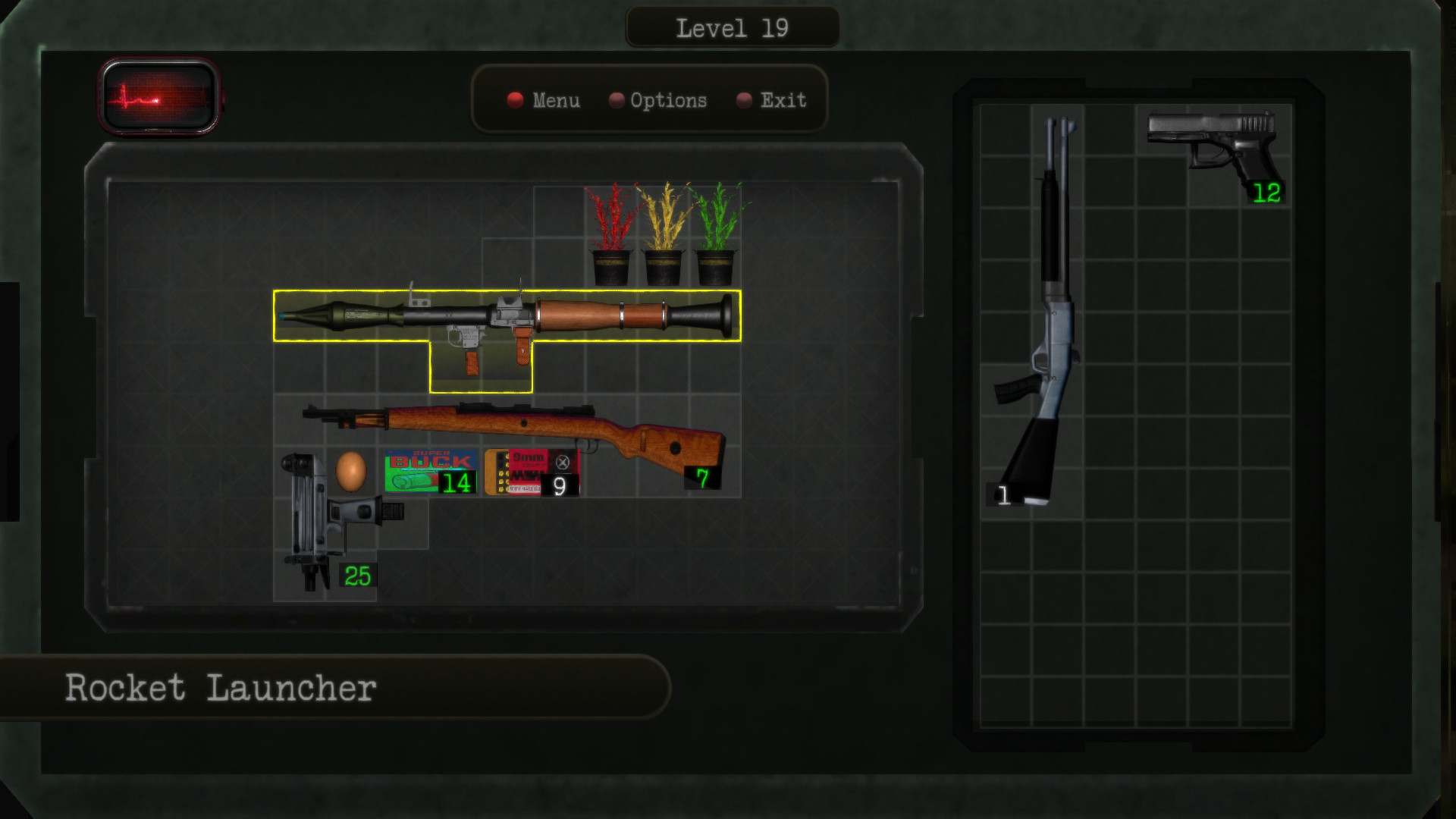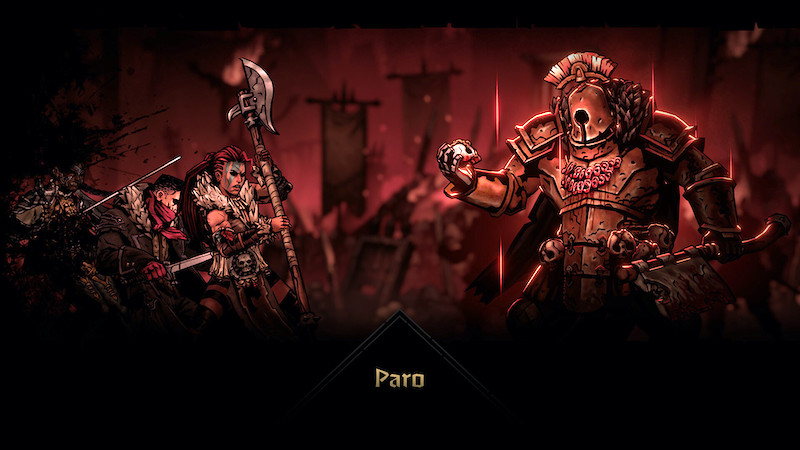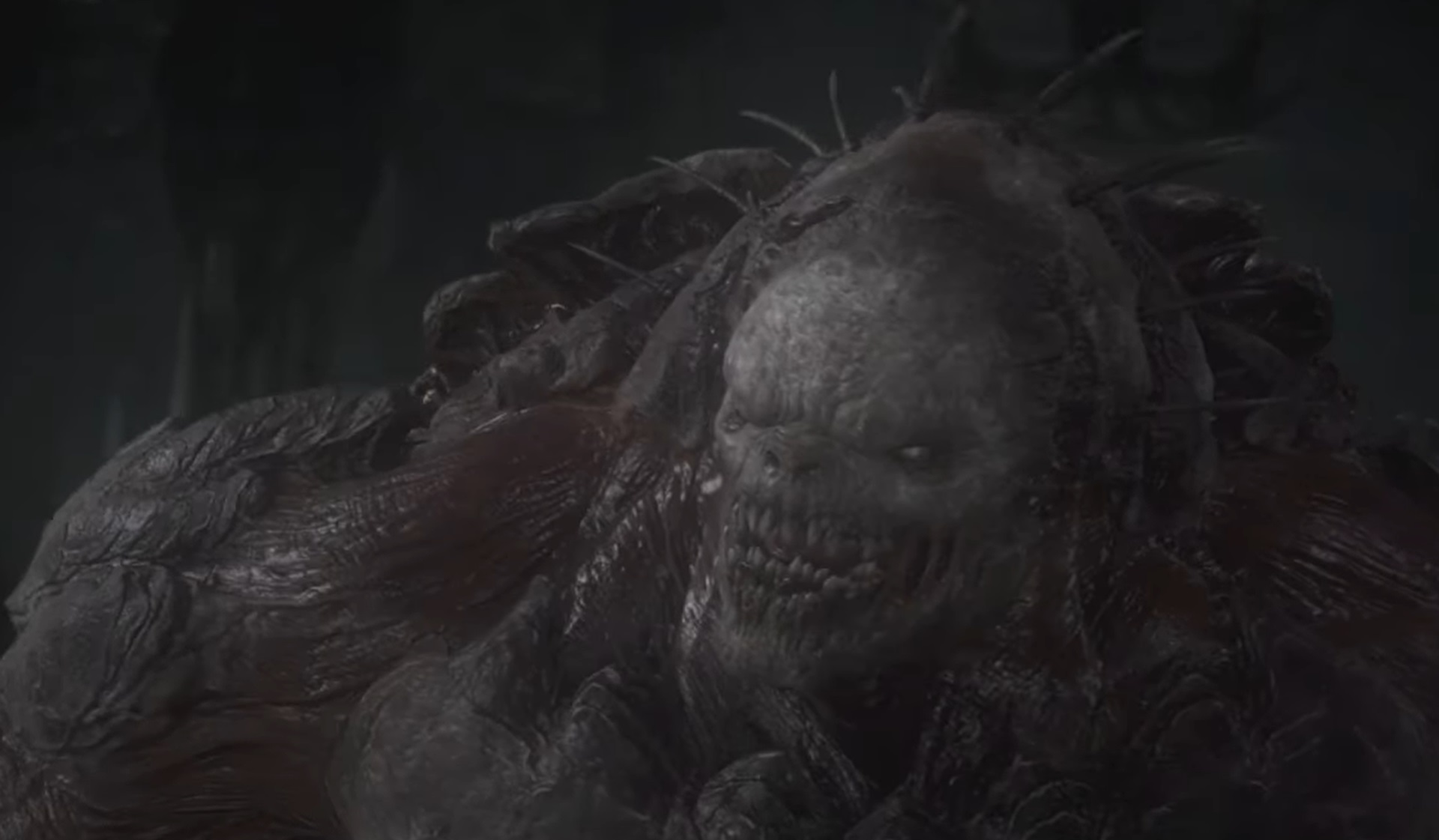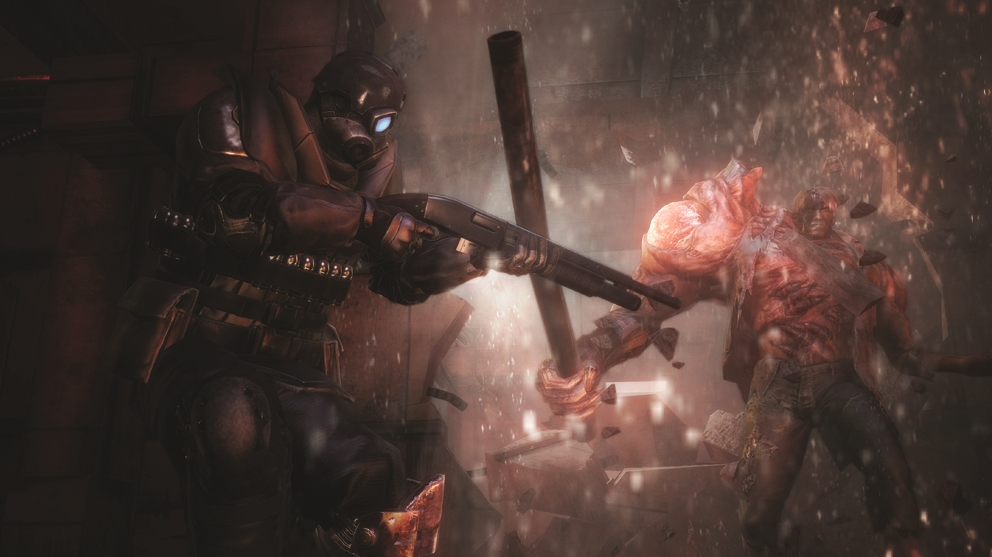
Save Room Captures The Charm of Resident Evil 4’s Inventory System
Save Room captures that odd calm you feel when you decide to sort items instead of pay attention to chainsaw-wielding killers. Drawing from the inventory system of Resident Evil 4, it tasks you with flipping and organizing items so they all fit in your case. Trouble is, some of these things are odd shapes and sizes. Forget about throwing anything away, too. Who knows when you’ll need that egg? Admittedly, the stakes feel slightly different when you’re not sorting to survive (nothing is coming to kill you in this game). Just the same, it made me think about how much I liked tidying up my inventory and how all manner of things can add to your enjoyment of a game.
You have an array of guns, boxes of ammo, healing herbs, eggs, and grenades in each level of this puzzle game. Then, you have to make these fit into the boxes provided to you. However, inventory space is quite tight. You only have just enough space to fit everything in. To make things more complex, you can rotate things around to fit them into different orientations. You can also combine ammo powders and herbs into different items. You can reload guns and restore your health with items. You’ll need to either load, use, or store everything to complete a stage.
As someone who’s spent hours sorting through his inventory in Resident Evil 4, that didn’t sound too hard. Irregular inventory shapes make Save Room quite challenging, though. Your inventory space almost always has some kind of goofy layout. There’s usually only a few possible answers due to these layouts, so you’ll be turning and utilizing things in all kinds of ways to figure out where they fit. I mean, it’s a puzzle game. It HAD to get challenging in some way.

These layouts do a fantastic job of capturing that feeling of need that came from playing Resident Evil 4. While working through that game, I NEEDED everything I picked up. It would be stupid to waste a single grenade, ammo box, or healing item just because organizing the inventory would be hard. Even if I had to spend a few minutes rotating and sorting things to fit a single egg, that was another healing tool that could help me later. It might be the item that makes the difference between dying or surviving a boss fight.
There’s no deadly stakes in Save Room. However, you can’t progress without keeping everything. You NEED to find a spot for it all. This helped create that sensation that I had to make room for everything before moving on, which was neat to see in a puzzle game where I couldn’t die. I really wasn’t expecting a similar sensation to well up inside me. But I’ll be damned if I’m going to leave a single thing behind. Except TMP ammo, I guess. That gun is trash.
It also did an incredible job of capturing how hard that sorting could be. There were a lot of oddly-shaped items in Resident Evil 4. However, you could usually make it work if you spent enough time moving things around. Since the puzzle game captures that sense of need like the game does, you also feel compelled to keep moving and fiddling with things until they all fit. That could get pretty hard at times, often having me dump the whole inventory onto a side screen and then bring it back, item by item. I could usually make it work if I really committed to it.

Save Room, like Resident Evil 4, is enjoyable in this regard. There’s an appeal in just moving items around and making them fit within the space you have. There’s a sense of straightening up a chaotic space as you do it. It’s the appeal of cleaning up your workstation or desktop. It feels good to watch the items slowly settle into place in neat rows so you can easily find what you need. I like being able to mess around until I find that little bit of room I need to squeeze one more helpful item into my inventory.
It’s interesting, because Resident Evil 4 marked a big change in how the Resident Evil games handled inventory up until this point. You used to just dump items into an infinite inventory box or throw things into your pockets. Here, you had to really play around with sizes and shapes. There’s a Tetris-like puzzle feel to sorting out this inventory. Sorting your inventory in Resident Evil 4 brings a puzzle game into a horror game, and one where the stakes felt more important than a high score. Solve these puzzles and you might survive your next fight. It was about the difference between living or dying. It’s a good reason to avoid having empty spaces. And it was appealing as a puzzle as well as for survival.

Also, there’s something enjoyable in the little clicks and sounds that come from moving and placing items in Save Room. Picking up or placing something makes this tiny, satisfying sound that feels like slotting pieces into a machine. There’s an appealing click when you put something in place that makes it FEEL like it fit. These tiny audio details added this sensation of putting a complex machine together just right. The kind of tiny satisfaction you get when you put a USB cable in right on the first try. It’s such a small detail in this game and in Resident Evil 4, but they added to my enjoyment.
I loved Resident Evil 4’’s combat and scary moments. As it turns out, I also just really liked cleaning up my inventory. Its Tetris-like feel was like a puzzle game. It was a puzzle game where I’d die if I messed up. Which is honestly the kind of stakes I like. From rotating and moving items to the sounds you’d hear while placing them, it was extremely satisfying to get everything in your case. Save Room continues those pleasant feelings with some surprisingly devious puzzles, and in playing them, I realized how much inventory management, and the little details of its design, contributed to my enjoyment of one of my favorite horror games.




